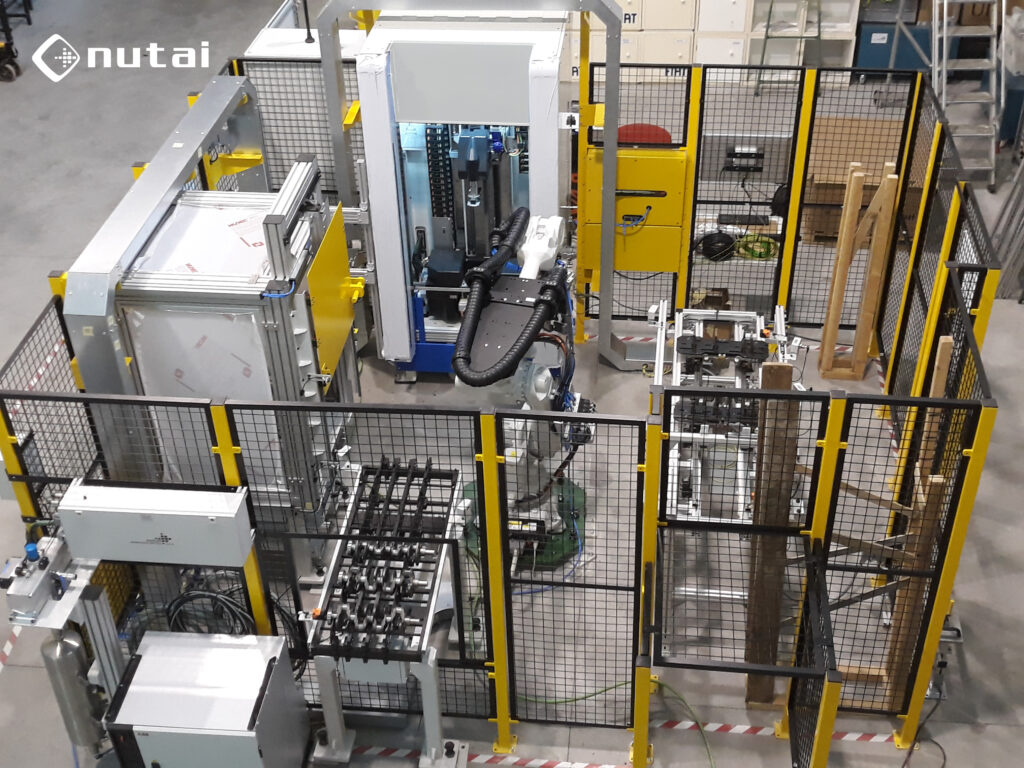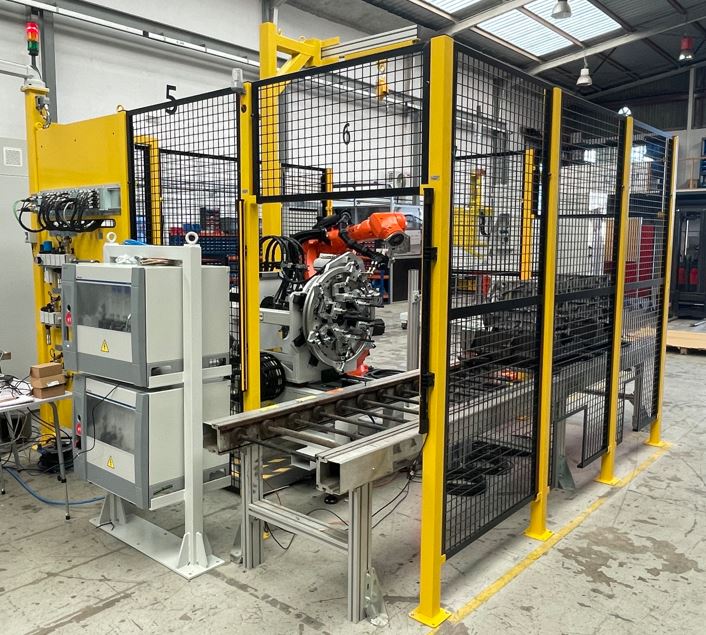What is a robotic cell?
A robotic cell is a defined area within an industrial environment that integrates one or more industrial robots along with complementary devices such as sensors, specialised end-effectors, and control systems. Its primary function is to automate one or more tasks within a manufacturing or production process. These cells are often physically enclosed with safety fencing or guarding elements, although collaborative configurations also exist that allow safe interaction between robots and human operators.
A typical robotic cell consists of:
Types of robotic cells
Each robotic solution must be tailored to suit the available space, product specifications, production volume, and required level of automation.

- Robotic welding cells
- Assembly cells
- Palletising cells
- Collaborative robotic cells
What are robotic cells used for?
Robotic cells are designed to automate tasks that require high levels of repeatability, speed, precision, or which involve risks to human operators. Integrating a robotic cell into a production line enables continuous operation, improving throughput and efficiency.
By automating repetitive movements, handling of heavy components, or tasks performed in hazardous conditions, robotic cells significantly reduce the risk of workplace accidents and ergonomic strain. Moreover, these systems enable enhanced traceability and quality control. With integrated sensors, vision systems, and real-time monitoring, every operation can be recorded and analysed, making it easier to detect deviations and maintain compliance with quality standards.
Typical industrial applications include
- Welding
- Automatic screwdriving
- Component assemblys
- Material handling and transfer
- Palletising and depalletising
- Visual inspection and quality control using machine vision

If you’re considering automating a process using a robotic cell, feel free to contact us at:
📩 sales@nutai.com